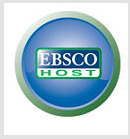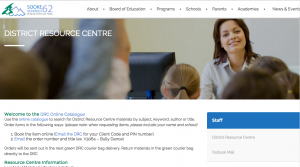Author: Cherise Bouvier
Hello world!
Welcome to SD62 User Blogs. This is your first post. Edit or delete it, then start blogging!
Gale
Individual locations must post.
See Dawn Anderson for details
Passeport pour Internet

myBlueprint

KNOWBC.Com

Media Smarts

Passport to the Internet

Ebsco Host

Updates and Highlights (The Hook)

This is the space where people will come for updates and highlights and this will need to updated regularly. You can place many updates here as this is a slideshow.
World Book

Learning

With the vast amount of information and the advancements in technology, the way students learn and the how faculties teach is changing. This shift in education, driven by technology, has uncovered an opportunity for school libraries to play an important role in school improvement in this educational transformation era (Canadian Library Association, 2014). “For technology to affect student learning, schools must ensure that appropriate resources are in place” (Day, 2010, p. 43). The Learning Commons will supply these resources. The Learning Commons goes beyond the provision of resources, however; it enables learners and faculty to use and experiment with the resources. “The finding of most studies is that technology initiatives will be successful only if professional development and technology support are part of the implementation process” (Nagel, 2010 as cited in Logan, 2010, p. 34). The Learning Commons will act as the laboratory for the experimentation and understanding how the technology can best support the pedagogy to increase student learning and motivation.
References:
Candian Library Association (2014). Leading Learning: Standards of Practice for School Library Learning Commons in Canada. Retrieved from clatoolbox.ca/casl/slic/llsop.pdf
Day, C.W. (2010, Feb 1). Classroom Technology: Do you have the right tools for 2010. American School and University Magazine. Retrieved from asumag.com/constructiontechnology/tech-talk-classroom-technology
Hayes. T (2014, Jan) Library to Learning Commons. A Recipe for Success. Education Canada Magazine. Retrieved from www.cea-ace.ca/education-canada/article/library-learning-commons
Logan, G. (2010). Mobile Technologies in the Classroom. ATA Magazine, 91(1), pp. 32-35.
The Physical Learning Commons

What is a Library Learning Commons?
A learning commons is a whole school approach to building a participatory learning community. It is designed to engineer and drive future-oriented learning and teaching throughout the entire school. Inquiry, project/problem-based learning experiences are designed as catalysts for intellectual engagement with information, ideas, thinking, and dialogue. Reading thrives, learning literacies and technology competencies evolve, and critical thinking, creativity, innovation and playing to learn are nourished. Everyone is a learner; everyone is a teacher working collaboratively toward excellence.
-Leading and Learning: Standards of Practice for School Library Learning Commons in Canada (2014).
Virtual Learning Commons

Creative Commons

Creative Commons is a non-profit organization that promotes and  enables the sharing of knowledge and creativity throughout the world. The organization produces and maintains a free suite of licensing tools to allow anyone to easily share, reuse, and remix materials with a fair “some rights reserved” approach to copyright.
enables the sharing of knowledge and creativity throughout the world. The organization produces and maintains a free suite of licensing tools to allow anyone to easily share, reuse, and remix materials with a fair “some rights reserved” approach to copyright.
Access it here
Collaborate and Create: HITRECORD

District Online Resources

Here are all of the resources that are part of the BC Digital Classroom Bundle. You may use these portals or create your own on your own website.
Here is the “How To” guide: HERE
World Book Online:
EBSCO Host:
Know BC:
Media Smarts:
Teacher: Go HERE
Media Smarts: French Version
Teacher: Go HERE
Gale: (*working on getting these to your school’s webpage)
The schools in SD62 can get direct URLs to each product, widgets/icons for their website(s), title lists and more here: support.gale.com/
The main URL for each school is infotrac.galegroup.com/default/(their Location ID)
(for example, Belmont Secondary’s main url is infotrac.galegroup.com/default/62bess)
Tutorial Video for Gale: HERE
____________________________________________________________________
My Blueprint:
What is a Virtual Learning Commons?
 What is a Learning Commons?
What is a Learning Commons?
Imagine a school where there is a physical and virtual space for collaboration among students, faculty and administration. This space is “the hub of the school, where exemplary learning and teaching are showcased, where professional development, teaching and learning experimentation and action research happen” (Loertscher, Koechlin & Zwaan, 2008 as cited in Hayes, 2015). The faculty and administration identify that students learn in unique ways and the concept of a learner centered environment is a part of the school’s culture. Administration and faculty collaborate to “…build the capacity of learners to make sense of the world around them, to graduate good citizens in a democratic society, and to prepare our youth for successful careers and healthy, satisfying personal lives” (Canadian Library Association, 2014). The British Columbia’s Teacher Librarian Association (BCTLA) has identified the need for the scenario described and are working to transform the library into a Learning Commons in schools across BC, among these – schools in the Sooke School District.
“A Learning Commons is a common, or shared, learning ‘space’ that is both physical and virtual. It is designed to move students beyond mere research, practice, and group work to a greater level of engagement through exploration, experimentation, and collaboration. A Learning Commons is more than a room or a website. A Learning Commons allows users to create their own environments to improve learning. A Learning Commons is about changing school culture, and about transforming the way learning and teaching occur” (Loertscher, Koechlin & Rosenfeld, 2012).
References:
Canadian Library Association (2014).Leading Learning: Standards of Practice for School Library Learning Commons in Canada. Retrieved from clatoolbox.ca/casl/slic/llsop.pdf
Hayes. T (2014, Jan) Library to Learning Commons. A Recipe for Success. Education Canada Magazine. Retrieved from www.cea-ace.ca/education-canada/article/library-learning-common
Loertscher, D.V., Koechlin, C. & Rosenfeld, E. (2012). The virtual learning commons: Building a participatory school learning community. Salt Lake City, UT: Learning Commons Press.
What is a Virtual Learning Commons?

 What is a Learning Commons?
What is a Learning Commons?
Imagine a school where there is a physical and virtual space for collaboration among students, faculty and administration. This space is “the hub of the school, where exemplary learning and teaching are showcased, where professional development, teaching and learning experimentation and action research happen” (Loertscher, Koechlin & Zwaan, 2008 as cited in Hayes, 2015). The faculty and administration identify that students learn in unique ways and the concept of a learner centered environment is a part of the school’s culture. Administration and faculty collaborate to “…build the capacity of learners to make sense of the world around them, to graduate good citizens in a democratic society, and to prepare our youth for successful careers and healthy, satisfying personal lives” (Canadian Library Association, 2014). The British Columbia’s Teacher Librarian Association (BCTLA) has identified the need for the scenario described and are working to transform the library into a Learning Commons in schools across BC, among these – schools in the Sooke School District.
“A Learning Commons is a common, or shared, learning ‘space’ that is both physical and virtual. It is designed to move students beyond mere research, practice, and group work to a greater level of engagement through exploration, experimentation, and collaboration. A Learning Commons is more than a room or a website. A Learning Commons allows users to create their own environments to improve learning. A Learning Commons is about changing school culture, and about transforming the way learning and teaching occur” (Loertscher, Koechlin & Rosenfeld, 2012).
References:
Canadian Library Association (2014).Leading Learning: Standards of Practice for School Library Learning Commons in Canada. Retrieved from clatoolbox.ca/casl/slic/llsop.pdf
Hayes. T (2014, Jan) Library to Learning Commons. A Recipe for Success. Education Canada Magazine. Retrieved from www.cea-ace.ca/education-canada/article/library-learning-common
Loertscher, D.V., Koechlin, C. & Rosenfeld, E. (2012). The virtual learning commons: Building a participatory school learning community. Salt Lake City, UT: Learning Commons Press.
SD#62 District Resource Centre
The Curriculum team is currently looking at the new curriculum to see what is new. We have gone through the resource Centre and are now able to highlight some of the key resources that teachers and Teacher-Librarians can access to use to support this new curriculum.
SD#62 Library Learning Commons

SD # 62 District Library Learning Commons:
In 2014, The Canadian Librarians Association supported the development of Standards of Practice for School
Library Learning Commons, which was developed by the Canadian Library Association’s Voices for School Libraries Network and the CLA School Libraries Advisory Committee in consultation with school library associations and educators across Canada.
Here is a copy of the standards: CLA Learning Commons Standards
It is my intention to support conversations and explorations of our own Libraries and Learning Commons. If Teacher- Librarians are interested in exploring the potentials for change within their own Library’s/ Learning Commons then I would love to provide the supports for those to do so.
BCTLA has many resources available that provide resources to those interested in exploring the idea of “Library to Learning Commons”. Here is the direct link to their resources and documented inquiries
CLA Video:
Additional Resources:
Aaron Muller and Jean Prevost SD# 63: Libraries to Learning Commons
David Loertscher and Carol Koechlin: The School Learning Commons Knowledge Building Center























